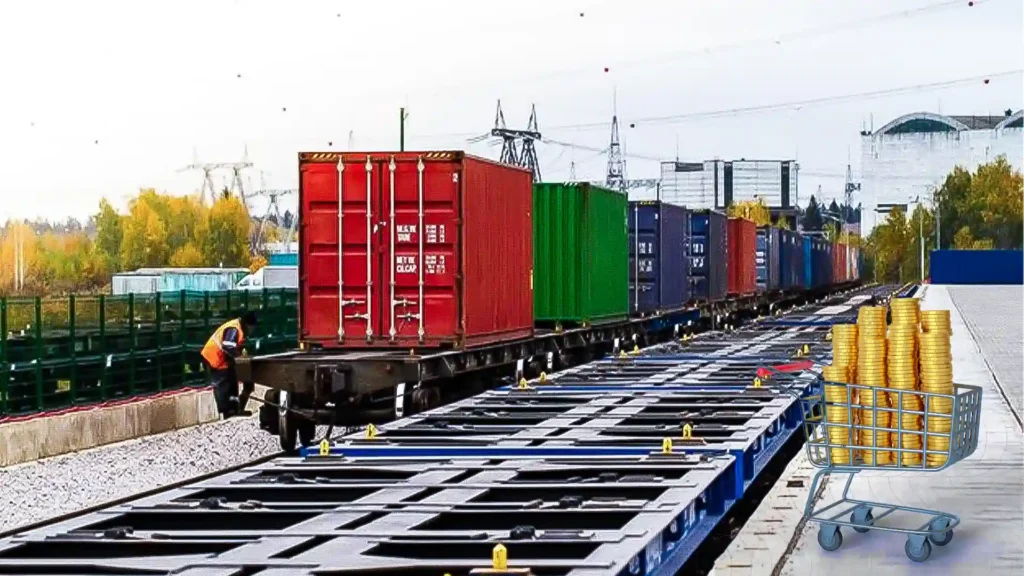Ever wondered why shipping costs in Canada are so high? Whether you’re a business owner trying to fulfill orders or a consumer waiting for a package, you’ve likely experienced sticker shock when seeing shipping fees. Canada’s vast geography, harsh weather conditions, and limited competition in the shipping industry all contribute to expensive shipping rates. But is there a way to reduce these costs?
According to a report by Statistics Canada, transportation costs account for nearly 50% of total logistics expenses in the country. With numbers like these, it’s no surprise that shipping remains a major concern for Canadians. Let’s break down why shipping is so expensive in Canada and what you can do to cut costs.
Geographic and Demographic Challenges
Shipping costs in Canada are heavily influenced by the country’s vast size and low population density. Unlike many other nations, Canada has fewer major urban centers, making it difficult to establish efficient shipping routes. This results in longer delivery times and higher expenses for carriers.
Additionally, the country’s varied landscape, including mountains, forests, and large bodies of water, creates logistical obstacles. These challenges increase fuel consumption and require specialized transportation methods, further raising costs.
Canada’s vast geography increases costs
Canada is the second-largest country in the world, covering nearly 10 million square kilometers. With cities and towns spread out over long distances, moving goods across the country requires significant fuel, labor, and infrastructure investments. Unlike smaller countries where logistics networks are more compact, Canada’s shipping routes often span thousands of kilometers.
Sparse population density limits the efficiency
With a population of just 4 people per square kilometer, Canada has one of the lowest population densities globally. Fewer people per region means fewer shipments moving in and out, making it difficult for carriers to optimize routes. As a result, shipping companies charge higher prices to cover their costs.
Harsh weather impacts logistics
Canada’s winters bring extreme snowstorms, icy roads, and freezing temperatures, which can delay deliveries and increase fuel consumption. Harsh weather leads to:
- Road closures and detours
- Increased vehicle maintenance costs
- Delays in air and rail freight
All of these factors contribute to the overall expense of shipping within Canada.
Limited Competition in the Shipping Industry

The Canadian shipping market is dominated by a handful of major players, leading to higher costs for consumers and businesses. Unlike in the United States, where competition drives prices down, limited options in Canada mean that shipping companies can maintain high rates.
Moreover, the lack of alternative carriers makes it difficult for businesses to shop around for better rates. With fewer choices, companies must accept the prices set by the dominant market players.
A few major carriers dominate the market
Unlike the U.S., where multiple courier services compete aggressively on pricing, Canada’s shipping industry is controlled by a handful of major players, including Canada Post, FedEx, UPS, and Purolator. With limited competition, there’s little incentive for companies to lower prices or introduce cost-saving innovations.
High barriers to entry for new shipping companies
The infrastructure required to operate a national shipping company in Canada is expensive and complex. From building distribution centers to establishing reliable delivery routes, new entrants face significant financial and logistical challenges, preventing competition from driving down costs.
Regulatory and Operational Constraints
Government regulations and operational challenges further contribute to high shipping costs in Canada. These regulations ensure service availability in all regions but come at a cost. Businesses and consumers alike must deal with higher prices as a result.
Additionally, international shipping regulations impose extra fees, making cross-border shipments particularly expensive. These regulatory constraints add another layer of financial burden for both businesses and customers.
Canada Post’s universal service obligation
Canada Post is required to deliver mail and packages to every address in Canada, even in remote and rural areas. While this ensures accessibility, it also means that Canada Post must operate unprofitable routes, leading to higher costs for all customers.
Import duties and brokerage fees
For businesses and consumers ordering from international retailers, shipping costs often include:
- Customs duties and taxes
- Brokerage fees for customs clearance
- Currency exchange fluctuations
These additional costs make international shipping to Canada more expensive compared to domestic shipping.
Supply Chain Disruptions Affecting Shipping Costs

Disruptions in the global and domestic supply chain have a direct impact on shipping expenses. Whether it’s labor strikes, global trade conflicts, or unexpected natural disasters, any delay in supply chain operations increases costs.
Canadian businesses that rely on imports and exports face frequent shipping challenges. With global supply chains becoming more fragile, businesses must adapt by finding cost-effective solutions.
Strikes and labor disputes
Labor strikes at ports, railway companies, and courier services frequently disrupt supply chains. When workers go on strike, shipments get delayed, warehouses overflow, and costs rise due to backlog management. For instance, the 2023 Port of Vancouver strike led to delays in shipments worth billions of dollars.
Global supply chain issues
Events like the COVID-19 pandemic, the Suez Canal blockage, and ongoing trade disputes have exposed vulnerabilities in the global supply chain. Since Canada relies on imports for many products, any disruption in international shipping causes delays and cost increases.
How to Reduce Shipping Costs in Canada
While shipping costs in Canada are high, businesses and individuals can take steps to minimize expenses. By utilizing smart shipping strategies, leveraging technology, and choosing alternative transportation methods, businesses can significantly reduce their shipping costs.
Consumers can also explore cost-saving options such as local pickup services or bundling shipments to take advantage of bulk discounts. Being strategic about shipping choices can lead to long-term savings.
Read More: How to Reduce Shipping Costs in Canada for 2025!
Negotiate better rates with carriers
Businesses can lower shipping costs by negotiating volume discounts with major carriers. Many shipping companies offer lower rates for businesses that ship regularly or in bulk.
Use regional fulfillment centers
By storing inventory in multiple locations across Canada, businesses can reduce the distance between warehouses and customers, lowering shipping costs and delivery times.
Optimize packaging
Shipping costs are often based on dimensional weight (DIM weight). Reducing unnecessary packaging can help lower shipping fees by minimizing the size and weight of each shipment.
Leverage technology for smarter shipping
Using AI-powered logistics software, businesses can find the most cost-effective routes, compare carrier rates, and automate order fulfillment to save time and money.
Consider intermodal rail shipping
Intermodal rail shipping offers a cost-effective and environmentally friendly alternative to long-haul trucking. By integrating RailGateway’s intermodal rail shipping services, businesses can move large shipments at lower costs while reducing carbon emissions.
Wrapping Up
Shipping in Canada is expensive due to its vast geography, harsh climate, limited competition, and regulatory constraints. However, businesses and consumers can explore strategies to reduce costs by optimizing shipping methods, leveraging technology, and considering intermodal rail solutions.
While high shipping costs remain a challenge, taking proactive steps can make a significant difference in managing expenses. By staying informed and making smart choices, you can save money and improve your shipping experience in Canada.






